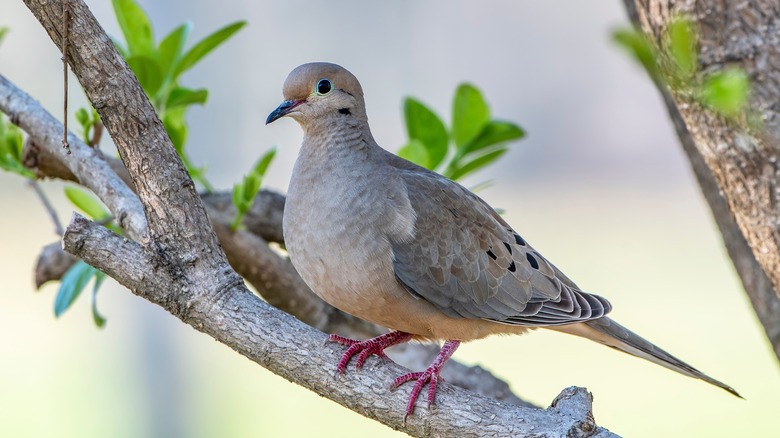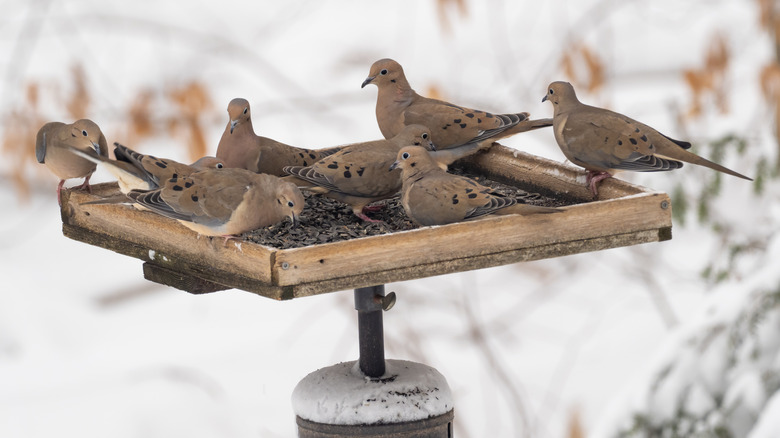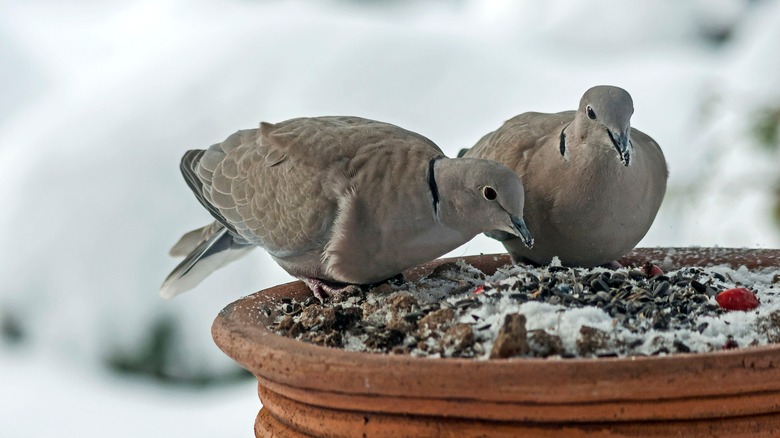Use This Type Of Bird Feeder To Draw More Mourning Doves To Your Yard
There's nothing like waking up to the sweet sound of a bird's chirping, especially if those sounds belong to a mourning dove. Imagine it: you wake up to make your morning coffee before work, only to feel instantly relieved of your hefty work week when you spot these beauties in your yard. Of course, this may sound impossible if you've heard how difficult it is to attract these coveted birds, and you may wonder why you aren't seeing any mourning doves in your yard. But, we may have the gameplay to make every bird watcher's dreams come true.
Mourning doves aren't just pretty to look at; they're also beneficial to improving anyone's garden. Because they will often eat unwanted weeds and just about any seed, they're great for organizing and cleaning your yard. Though they won't naturally repel pests from your garden, they'll undoubtedly clean up in other ways. One biologist found well over 17,000 grass seeds in a mourning dove's stomach. And let's not forget the bird's ability to swallow grit, pebbles, and gravel. This can be beneficial for tidying up your yard. Beyond its practical functions, the mourning dove (also nicknamed the turtle dove) is also a symbol of unity and peace. Looking at them might even bring you comfort throughout your day. So, if attracting mourning doves to your yard is on your bucket list, let's figure out how to get them to stick around.
Getting mourning doves to move in
Start by sprinkling bird seed on the ground, then build a large, open bird feeder in your yard. You should note that even though mourning doves spend a lot, and we mean a lot, of their time on the ground, having a large, open feeder will still bring a crowd to your garden. Most of the time, they're just gathering their food on the ground and piling it in their esophagus for later, so having a lovely space to actually eat it will have them eyeing your feeder.
While plump mourning doves are a bit more aesthetically pleasing in a garden, remember that their size makes it a bit more challenging for them to maneuver around than it does for daintier, smaller birds. The open feeder allows them to perch easily and, in turn, want to return to your garden often. Feeling protected is also key here. Mourning doves like to be near shrubbery or trees for the sake of comfort. Recreating an environment they'd naturally go to is essential. It's also important because fallen seeds can usually welcome rodents or snakes, which can be dangerous for any mourning doves you might attract.
Tips for DIYing your feeder
If you're building a feeder yourself, start by gathering scrap wood. Surprisingly, the process is straightforward and should only take a couple of hours. As mourning doves prefer a platform or open feeder, you should start by cutting four pieces of wood, each measuring 2 by 12 inches. Be sure to sand away and remove any splinter or rough patches that could be dangerous to the doves. Use at least two nails on each corner, leaving you with a shallow, bottomless box — this is where you want to apply a screen. It should overlap the feeder, so this screen should be around 13 by 13 inches.
The screen should be stapled or glued tightly to the square of the feeder, and any loose wires should be monitored closely and removed before use. Grab a nylon rope and get two pieces about 6 feet long. You'll want to apply both pieces of rope diagonally from each other, locking each corner with the opposite one. Once all sides are connected to a rope, tie the rope at its center and hang it on your preferred tree limb. Sprinkle it with cracked corn, a mourning dove's favorite for getting both protein and fiber. Any stray ragweed or grains you have on hand will also be highly suitable for getting them to notice your new feeder.


